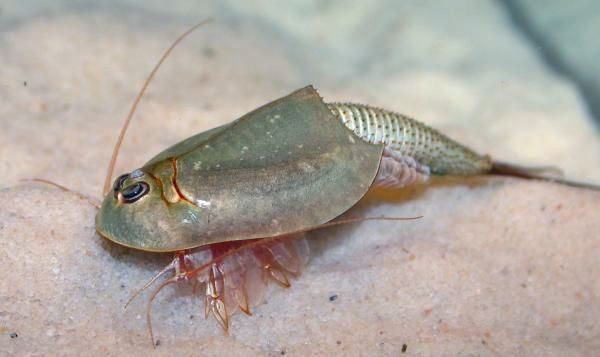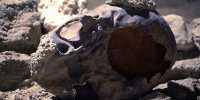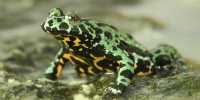Fans of the film Jumanji may recall the dramatic sequence in which a downpour delivers a slurry of crocodiles to Robin Williams’ living room. While this is a bit of a stretch, these weather systems sometimes bring unexpected visitors. A temporary lake that sprang up amid heavy rains in Arizona recently received one such delivery, with odd three-eyed beasties populating it. They are known as triops, and their transformation into prehistoric-looking tadpoles can take decades after the eggs have been placed, according to officials at Wupatki National Monument.
Staff at the WNM was unaware of any alien-looking tadpoles arriving after the monsoon, but tourists alerted to a colony of mystery critters that had taken up residence in the site’s ceremonial ball court. They examined to see who had moved in, fearing that some toads had taken advantage of the damp conditions and released some eggs.
“We knew there was water in the ball court, but we weren’t expecting anything to live in it,” Wupatki National Monument lead interpretation ranger Lauren Carter told Live Science. “I just took it in my hand and gazed at it, thinking to myself, ‘What is that?'” “I didn’t know.” The pool crashers turned out to be a colony of troops, possibly of the species Triops longicaudatus, however, testing was needed to confirm. Because of the ancient traits, they have maintained from their predecessors who lived hundreds of millions of years ago, they are also known as tadpole shrimp or – our personal favorite – dinosaur shrimp.
While triop is Greek for “three eyes”, their setup is a little more complicated than that. They have two main eyes with black rims, between, which sits a pit organ. This “third eye” is common among insects and comes in handy for prey animals as they can detect changes in light, such as the shadow of a bird closing in on you. The dinosaur shrimp eggs, like the sea monkeys you can buy in toy stores, can remain dried out in suspended animation while they wait for the ideal conditions to hatch, and what are those? “A shitload of rain,” says the narrator.
After decades of waiting, the eggs can catch and release young dinosaur shrimp that look like three-eyed horseshoe crabs. This explains how the triops at the WNM was able to appear seemingly out of nowhere and establish themselves on the ball court, surprising both personnel and tourists. The triops were a well-established group with several hundred members, but they did not stay long. These critters had a 50-90-day lifespan, but they were hampered by hungry birds and warm weather, which caused the pool to dry up in only a few weeks.
Triops are hermaphrodites, although they may also reproduce sexually, this is regarded to be a less common method of producing offspring for the species. For the time being, it is unclear how many eggs the triops were able to squeeze out during their brief visit to the ball court, but all will be revealed in the coming rainstorm.















